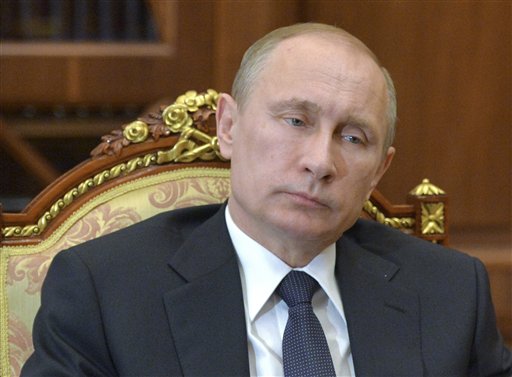
The CIA has identified Russian officials who fed material hacked from the Democratic National Committee and party leaders to WikiLeaks at the direction of Russian President Vladimir Putin through third parties, according to a new U.S. intelligence report, senior U.S. officials said on Thursday.
The officials, who spoke on condition of anonymity, said the Central Intelligence Agency and others have concluded that the Russian government escalated its efforts from discrediting the U.S. election process to assisting President-elect Donald Trump’s campaign.
The intelligence assessment was presented to President Barack Obama on Thursday and will be briefed to Trump on Friday. Trump has rejected the broad intelligence community’s assessment that Russia staged cyber attacks during the election campaign to undermine Democratic rival Hillary Clinton.
Russia has rejected the hacking allegations.
“By October, it had become clear that the Russians were trying to help the Trump campaign,” said one official familiar with the full report speaking on the condition of anonymity because the complete version is Top Secret.
In some cases, one official said, the material followed what was called “a circuitous route” from the GRU, Russia’s military intelligence agency, to WikiLeaks in an apparent attempt to make the origins of the material harder to trace, a common practice used by all intelligence agencies, including U.S. ones.
These handoffs, the officials said, enabled WikiLeaks founder Julian Assange to say the Russian government or state agencies were not the source of the material published on his website.
In an interview with Fox News this week, Assange said he did not receive emails stolen from the DNC and Clinton aide John Podesta from “a state party.” Assange did not rule out the possibility that he got the material from a third party.
Details of the report emerged as the top U.S. intelligence official, James Clapper, said on Thursday he was “even more resolute” in his belief that Russia staged cyber attacks on Democrats during the 2016 election campaign.
Not all 17 intelligence agencies participated in preparing the assessment. An unclassified version of the report is expected to be released on Friday morning, two officials said.
The report contains some of what the officials called “minor footnotes” about open questions and other uncertainties, in part because some of the evidence supporting the conclusion is inferential.
One such example, the officials said, was that intercepted messages and conversations among senior Russian officials in Putin’s inner circle indicated they were aware of the hacking campaign and celebrated Trump’s election as a victorious end to the campaign.
The officials declined to discuss the nature of the communications, including whether they were domestic, international, or both.
“People who knew what this was about were celebrating a victory over the United States,” said one official.
Another example of inferential evidence, the officials said, was that as time passed and the early leaks attracted media attention that undermined or eclipsed Clinton’s campaign, the Russians increasingly focused their hacking “almost exclusively” on Democratic rather than Republican targets.
There was also strong resemblance — including the use of the same computer malware — the Russians have used against targets in Europe and the marriage of traditional espionage tactics used by Soviet and Russian intelligence such as bribery, blackmail and internet vulnerabilities, which they said Putin has devoted increasing resources and attention to exploiting.
For example, one official said, the Democratic databases and email servers the Russians hacked also contained personal information that WikiLeaks has not published.
Such information could be used to search for financial, medical, browsing history and other records that can be used to target individuals for recruiting efforts by Russian spies.
REUTERS
Leave a Reply
You must be logged in to post a comment.